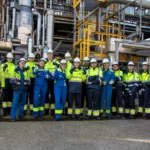
March 2020, the European Union came forward with an EU industrial strategy and new circular economy action plan. The aim is to stimulate the development of lead markets for climate neutral and circular products, in the EU and beyond. Cefic and its members are ready to take a leading role in accelerating the transition.
“Transitioning towards a circular economy can contribute to addressing our global resource challenge, reduce greenhouse gas emissions through better use and reuse of the materials that already exist in the economy, reduce environmental littering, create new meaningful jobs, and spur economic growth”, states Ann Dierckx, Cefic’s Sustainability Director. “The chemical industry is uniquely positioned in the value chain to drive and enable sustainability benefits to both make value chains more circular and develop sustainable products”.
Europe intends to be a world leader in the circular economy and clean technologies. To meet the ambitious European targets, it is necessary to recycle much more plastic waste and serve plastic products containing recycled content to a broader range of markets.
Chemical recycling as game changer
The European chemical industry – as signatory of the Circular Plastics Alliance – has committed to work with other signatories to ensure that 10 million tonnes of recycled plastic find their way back into products by 2025. The chemical industry can play a leading role in increasing the amount of recycled plastic by scaling up the chemical recycling technology.
“Chemical recycling of end-of-life plastics can fill a key gap in the recycling loop and change the way we approach plastics recycling”, said Pierre Barthélemy, Cefic’s Executive Director Innovation. “It complements other plastic recycling options like mechanical recycling, is indispensable to reducing plastic waste and realising a plastic circular economy”. Chemical recycling enables the production of new plastics that can be used in all applications without limitations to the number of times it has been re-used.
To fully unlock the circular economy potential of chemical recycling, it is time to develop a business case. To scale up chemical recycling, the chemical industry requires an enabling policy framework that looks beyond the traditional boundaries of regions and Member States and offers an open investment environment and a competitive economic model. Furthermore, an open, single market can help ensure a continuous supply of plastic waste for the operation of chemical recycling plants.
Background
Chemical recycling technologies, also known asfeedstock recycling, are processes where the chemical structure of the polymeris changed and converted into chemical building blocks, including monomers,that are then used again as a raw material in chemical processes. In otherwords, chemical recycling breaks down plastic waste back into feedstock to makenew chemicals and plastics. Result – less use of fossil feedstock to produceplastic and fewer emissions from incineration and energy recovery.
Chemical recycling can process contaminated and mixedplastic waste that cannot be recycled through mechanical recycling and wouldotherwise end up in incineration or landfill. It also has the potential tocapture and separate the so-called “legacy chemicals” and substances of veryhigh concern (SVHC) that can be present in end-of-life plastic.










